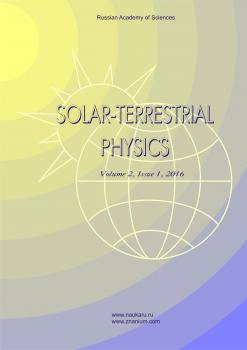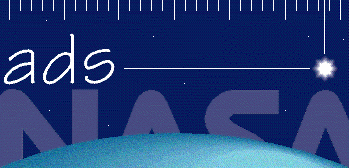Kazan, Kazan, Russian Federation
Kazan, Russian Federation
Kazan, Russian Federation
Kazan, Kazan, Russian Federation
The paper presents the results of estimation of the effects of September 5–12, 2017 solar flares on the regional disturbance of Earth's ionosphere according to data from a distributed network of GNSS stations located mostly in the Volga Federal District of the Russian Federation. The GNSS data processing software package we have developed is used to analyze recorded signal power and daily two-frequency phase measurements, as well as to calculate the total electron content and map the data. The results of the study show that during powerful solar flares X2.2 and X9.3 on September 6 the median value of the total electron content, calculated for the Volga Federal District, increased up to 0.25 TECU and 0.6 TECU respectively. At that time, the region of interest (40°–55° E) was sunlit. The prolonged magnetic storms on September 8 also generated noticeable ionospheric disturbances up to 0.2 TECU. At the same time, neither the solar flares nor the magnetic storms had a significant effect on the power characteristics of the recorded signals from navigation satellites in the region under study. The median carrier-to-noise ratio calculated for the region considered over the entire observation period did not differ from the values recorded under undisturbed ionospheric conditions and varied between 47–53 dBHz and 38–49 dBHz for frequencies L1 and L2 respectively.
ionosphere, GNSS, total electron content, solar flare, magnetic storms, GPS, GLONASS, TEC maps
1. Afraimovich E.L., Perevalova N.P. GPS Monitoring of the Earth’s Upper Atmosphere. Irkutsk, 2006, 479 p. (In Russian).
2. Afraimovich E.L., Altyntsev A.T., Grechnev V.V., Leonovich L.A. Ionospheric effects of the solares as deduced from global GPS network data. Adv. Space Res. 2001, vol. 27, no. 6-7, pp. 1333-1338.
3. Alken P., Thébault E., Beggan C.D., Amit H., Aubert J., Baerenzung J., Bondar T.N., Brown W.J., et al. International Geomagnetic Reference Field: the thirteenth generation. Earth, Planets and Space. 2021, 73, 49. DOI:https://doi.org/10.1186/s40623-020-01288-x.
4. Denisenko P.F., Skazik A.I. Determination of parameters of moving ionospheric disturbances based on satellite sensing data. Electromagnetic waves and electronic systems. 2007, Vol. 12, no. 5, pp. 33-35. (In Russian).
5. Fleming J.A., Harradon H.D., Joyce J.W. Terrestrial Magnetism and Atmospheric Electricity. Seventh General Assembly of the Association of Terrestrial Magnetism and Electricity at Washington. 1939, Vol. 44, no. 4, pp. 477-478. DOI:https://doi.org/10.1029/TE044i004p00471.
6. GOES I-M Databook. Space System Loral. 1996, p. 184.
7. Gurtner W. RINEX: The Receiver Independent Exchange Format version 2.11. Astronomical Institute, University of Berne, UNAVXO Boulder, 2007, p. 57.
8. Hofmann-Wellenhof B., Lichtenegger H., Collins J. Global Positioning System. Theory and Practice, 3rd ed. XIII, Wien, New York: Springer-Velag, 1994, p. 355. DOI: 10.1017/ S0016756897438256.
9. Kogogin D.A., Nasyrov I.A., Shindin A.V., Grach S.M., Maksimov D.S., Zagretdinov R.V., Dementiev V.O. Dynamic changes of the ionospheric artificial airglow region caused by powerful radio emission based on a joint analysis of night-sky snapshots in the 630 nm line and total electron content variation maps. Radiophysics and Quantum Electronics. 2020, vol. 63, no. 2, pp. 89-104. (In Russian).
10. Laryunin O.A., Kurkin V.I., Podlesnyy A.V. Using of data from two closely spaced ionosondes in the diagnosis of moving ionospheric disturbances. Electromagnetic Waves and Electronic Systems. 2014, vol. 19, no. 1, pp. 10-17. (In Russian).
11. Leonovich L.A. Ionospheric response to solar flares and magnetic storms according to the global GPS network: Abstract of Thesis. Irkutsk, 2003, 15 p. (In Russian).
12. Perevalova N.P. Investigation of ionospheric disturbances by the method of trans-ionospheric GPS sensing: Abstract of Thesis. Irkutsk, 2014, 32 p. (In Russian).
13. Qian L., Wang W., Burns A.G., Chamberlin P.C., Coster A., Zhang S.-R., Solomon S.C. Solar flare and geomagnetic storm effects on the thermosphere and ionosphere during 6-11 September 2017. J. Geophys. Res.: Space Phys. 2019, vol. 124, iss. 3, pp. 2298-2311. DOI:https://doi.org/10.1029/2018JA 026175.
14. Svetska Z. Flare observations. Gordon and Breach Science Publisher, 1981.
15. Syrovatsky S.V., Jasjukevich Ju.V., Vesnin A.M., Edemskij I.K., Voejkov S.V., Zhivet’ev I.V. The influence of solar flares on the Earth’s ionosphere in the 24th cycle of solar activity. Moscow University Physics Bull. 2018, no. 4, 1840403 p. (In Russian).
16. Yasyukevich Y.V., Edemskij I.K., Perevalova N.P., Poljakova A.S. Ionosphere response to helio- and geophysical disturbing factors according to GPS data, Irkutsk: ISU Publ., 2013, 271 p. (In Russian).
17. Yasyukevich Y., Astafyeva E., Padokhin A., et al. The 6 September 2017 X-class solar flares and their impacts on the ionosphere, GNSS, and HF radio wave propagation. Space Weather. 2018, vol. 16, iss. 8, pp. 1013-1027. DOI: 10.1029/ 2018SW001932.
18. Yermolaev Y.I, Yermolaev M.Y. Solar and interplanetary sources of geomagnetic storms: aspects of space weather. Geophysical Processes and the Biosphere. 2009, vol. 8, no. 1, pp. 5-35.
19. URL: https://wdc.kugi.kyoto-u.ac.jp/dst_provisional/201709/ index.html (accessed September 17, 2022).
20. URL: https://www.spaceweatherlive.com/ru/solnechnaya-aktivnost/solnechnyy-cikl.htm (accessed September 17, 2022).
21. URL: https://tesis.xras.ru/magnetic_storms.html?m=9&d=8&y=2017 (accessed August 27, 2022).
22. URL: https://www.swpc.noaa.gov/noaa-scales-explanation (accessed September 25, 2022).
23. URL: https://www.mathworks.com/products/matlab.html (accessed October 7, 2022).
24. URL: https://www.space-track.org (accessed October 7, 2022).
25. URL: https://pypi.org/project/spacetrack (accessed October 7, 2022).
26. URL: https://pypi.org/project/skyfield (accessed October 7, 2022).
27. URL: https://insidegnss.com/measuring-gnss-signal-strength (accessed October 23, 2022).
28. URL: https://time365.info/voshod-i-zakat/kazan-rossiya (accessed January 20, 2023).
29. URL: https://wdc.kugi.kyoto-u.ac.jp/dst_provisional/201709/index.html (accessed January 20, 2023).
30. URL: https://rscf.ru/en/project/21-72-00043/ (accessed January 20, 2023).



















